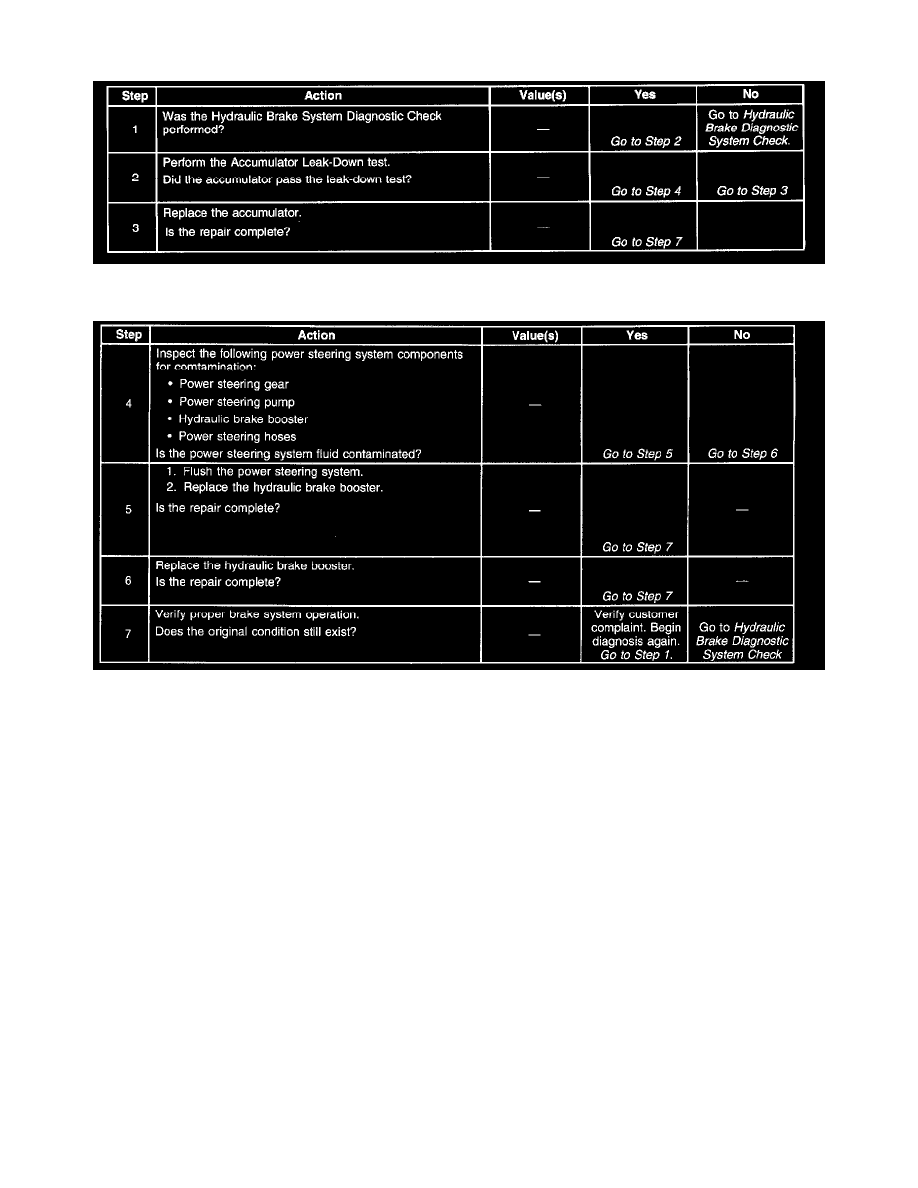K 1500 Suburban 4WD V8-6.5L DSL Turbo VIN F (1999)

Hydraulic Brake Booster: Component Tests and General Diagnostics
Part 1 Of 2
Part 2 Of 2
Accumulator Leak-Down Test
1. Start the engine.
2. Charge the accumulator by pressing the brake pedal or by completely turning the steering wheel in one direction and then in the other.
3. Turn the engine off. Let the vehicle sit for an hour.
4. Perform two power assisted applications with the engine off.
5. If the accumulator failed to hold a charge after one hour, but functions normally after charging, the accumulator valves are malfunctioning.
Replace the accumulator.
6. If the charging and discharging of the accumulator is audible, but the accumulator still fails to hold a charge, the accumulator valves are
malfunctioning. Replace the accumulator.
7. Empty the accumulator by pressing the brake pedal 30 times.
8. The accumulator can will rotate or wobble if the accumulator has lost its gas charge. This replace the accumulator.
Brake Assist System
The hydraulic booster uses fluid pressure from the power steering system. A malfunctioning power steering system can affect the hydraulic booster. A
malfunctioning booster can affect the steering system. Before beginning extensive testing, perform the following procedure.
1. Check all power steering and brake pipe connections for leaks and restrictions.
NOTICE: Power steering fluid and brake fluid cannot be mixed. If brake seals contact power steering fluid or steering seals contact brake fluid,
seal damage will result.
2. Ensure that the master cylinder is properly filled.
NOTICE: Power steering fluid and brake fluid cannot be mixed. If brake seals contact power steering fluid or steering seals contact brake fluid,
